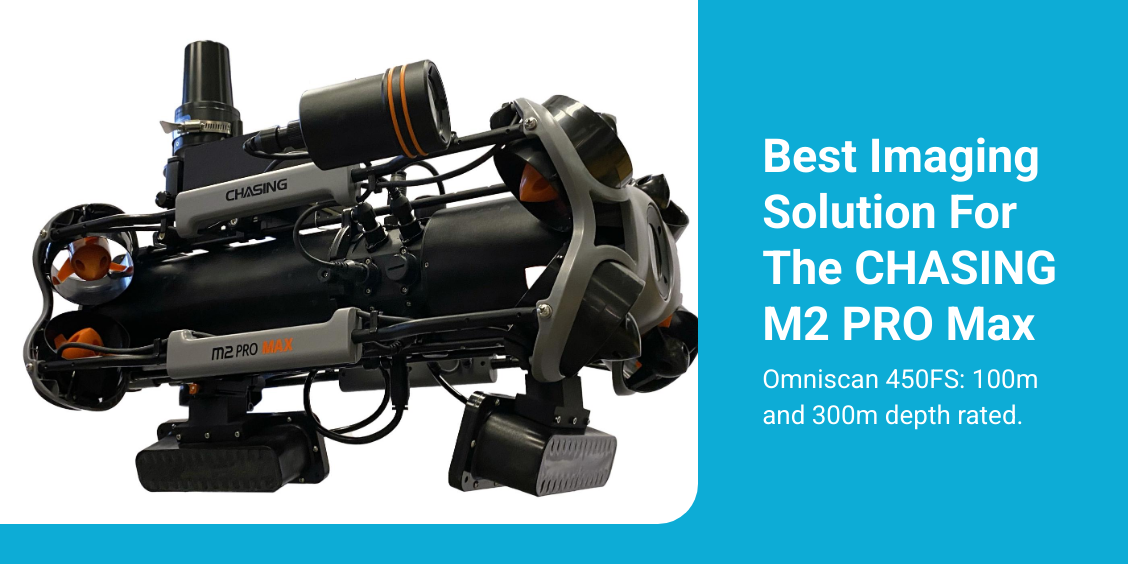Cerulean Sonar Omniscan 450: FF, FS, & SS
When choosing between the Cerulean Sonar Omniscan 450 FF (Compact), Omniscan 450 FS, and Omniscan 450 SS for your ROV or USV, it's crucial to consider your specific application requirements and how each system fits your operational needs.
1. Omniscan 450 Compact (FF)
Best for: Small ROVs or USVs with limited space for equipment.
Key Features:
Compact form factor, making it ideal for small platforms.
Integrated Ethernet switch allows for up to 2 additional Ethernet devices to be daisy-chained using a single Ethernet connection.
Great for general-purpose applications where a compact, easy-to-integrate sonar is needed.
Use Case: If you have a smaller vehicle and need a simple yet powerful sonar for various types of survey operations.
2. Omniscan 450 FS (Forward Looking)
Best for: Forward-looking sonar applications on ROVs.
Key Features:
Single enclosure with transducer and electronics.
Available in two depth rating options: 100m or 300m.
Ethernet + power interface, making it easy to integrate into systems.
Use Case: If you're performing forward-looking tasks (e.g., inspecting underwater structures ahead of the vehicle), this system’s single enclosure simplifies installation.
3. Omniscan 450 SS (Side-Scan)
Best for: Side-scan imaging applications, especially on ROVs or USVs requiring high-resolution scans.
Key Features:
Longer transducer providing better along-track resolution and extended range.
Designed to scan both sides simultaneously—order 2 units for dual-side scanning.
Separate PCBA (Printed Circuit Board Assembly) housed in a watertight container for vehicle integration.
Use Case: Ideal for surveying large areas or inspecting both sides of a survey area simultaneously. A great choice for deep-water inspections where range and resolution are critical.
Recommendations:
For Small ROVs or Compact Platforms: Go with the Omniscan 450 Compact (FF).
For Forward-Looking Applications: Opt for the Omniscan 450 FS, especially if you need to see ahead of your ROV.
For Side-Scan Surveys: Choose the Omniscan 450 SS if you need detailed side-scanning capabilities and high-resolution data across large areas.

Omniscan 450 Compact: Advanced Imaging for Small ROVs
The Omniscan 450 Compact is designed with a streamlined form factor, ensuring seamless integration with most small ROVs. This compact sonar system simplifies deployment while delivering high-resolution underwater imaging.
One of its key features is an internal Ethernet switch, allowing users to daisy-chain up to two additional Ethernet devices while maintaining a single Ethernet connection to the vehicle. This design reduces cable clutter and enhances system efficiency, making it an ideal choice for operations requiring multiple connected instruments.
Omniscan 450 FS: Forward-Looking Sonar for ROVs
Optimized for forward-looking ROV applications, the Omniscan 450 FS integrates both transducer and electronics within a single enclosure. This design minimizes complexity and ensures ease of installation.
The system features an Ethernet and power interface for reliable data transmission and operation. Two enclosure options are available, offering depth ratings of 100 meters or 300 meters, catering to a variety of underwater missions.
Omniscan 450 SS & 450 SS Blueboat: Enhanced Side-Scan Capabilities
For side-scan applications, the Omniscan 450 SS provides superior imaging performance. Its extended transducer offers improved along-track resolution and increased scanning range, making it an excellent tool for detailed seabed surveys.
For comprehensive dual-side scanning, operators can deploy two units simultaneously. The system’s PCBA is designed to be housed in a vehicle’s watertight container, ensuring durability and reliability in challenging underwater environments.
The Omniscan 450 SS Blueboat variant is specifically adapted for integration with USV platforms, enhancing remote survey capabilities.


Share:
CHASING ROVs Model Comparison Guide
Top 10 Best Selling Drones, ROVs, Robotics & More!